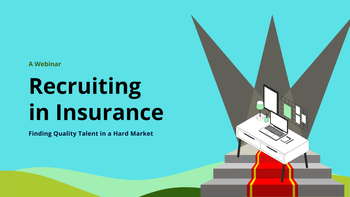In the ever-changing metropolis of the insurance industry, your agency is a castle, and your client data is the crown jewel. For centuries, castles were fortified with moats, drawbridges, and sturdy walls to keep intruders at bay. In today's digital age, your agency is under siege from a different kind of enemy: cybercriminals. And while you might not have a moat, you do have technology – a powerful tool that can also be a double-edged sword.
The insurance industry has undergone a dramatic transformation in recent years. Technology has become indispensable, enabling agencies to streamline operations, enhance customer experiences, and boost productivity. Many agencies have partnered with numerous third-party providers to achieve these goals, from customer relationship management (CRM) platforms to claims processing systems and marketing automation tools. While these partnerships offer significant benefits, they also introduce new security challenges.
Imagine your agency as a bustling marketplace. You've invited various vendors to set up shop, each offering unique products and services. While these vendors bring value, they also bring their security practices (or lack thereof). A single breach at one vendor could compromise your clients' sensitive information. This is the reality of the interconnected world we live in.
Adopting a proactive approach to data security is essential to safeguarding your agency's crown jewels. The first step is to understand the risks. Conduct a thorough assessment of your agency's data ecosystem, identifying all third-party vendors and the types of data they handle. This will help you prioritize your security efforts and allocate resources accordingly.
Once you have a clear picture of your data landscape, it's time to develop a comprehensive data protection strategy. This strategy should include the following key elements:
- Vendor Risk Management: Implement a rigorous vendor vetting process to assess the security posture of your third-party partners. Ask about their security certifications, incident response plans, and data encryption practices. Consider conducting regular security assessments or audits of high-risk vendors.
- Employee Training: Your employees are your agency's first line of defense. Provide regular cybersecurity training to educate them about phishing attacks, social engineering, and best practices for handling sensitive information.
- Access Controls: Implement strong access controls to limit who can access your agency's systems and data. Use role-based access controls to ensure employees only have access to the information they need to perform their jobs.
- Data Encryption: Encrypt sensitive data at rest and in transit to protect it from unauthorized access.
- Incident Response Plan: Develop a comprehensive incident response plan to address data breaches and other security incidents. This plan should outline steps to contain the breach, notify affected parties, and recover from the incident. This includes notifying your own cyber carrier.
In addition to these core elements, your agency should consider developing a checklist of questions to ask potential third-party vendors. This checklist can help you evaluate their security practices and identify potential risks. Here are some essential questions to include:
- What security certifications do you hold?
- How do you protect customer data?
- What is your incident response plan?
- How do you conduct employee training?
- What is your data retention policy?
- How do you handle subprocessor relationships?
- What is your disaster recovery plan?
Asking these questions can provide valuable insights into a vendor's security posture and help you decide whether to partner.
Remember, data security is an ongoing process, not a one-time event. As the threat landscape evolves, so too must your security measures. Stay informed about emerging threats and best practices, and regularly review and update your data protection strategy. This vigilance and proactive approach will keep you ahead of potential threats and ensure the safety of your agency's data.
Protecting your agency's data is crucial for maintaining your clients' trust and safeguarding your business's reputation. Taking a proactive approach and asking the right questions can significantly reduce the risk of a data breach and protect your agency's crown jewels.
It's important to note that while this framework provides a solid foundation for data security, the level of implementation can be tailored to your agency's specific needs and resources. Small agencies may focus on essential measures such as employee training and vendor vetting, while larger agencies may require more extensive security controls. The key is to start with a solid baseline and gradually enhance your security posture over time.






